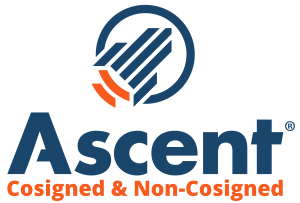
Flickr user Sebastien Wiertz
When college students turn to private student loans to pay for their college education, they are often too young to have built up enough credit to qualify for a loan on their own. Therefore, a common practice is to have their parents co-signing with them.
What is co-signing?
For the student, this means they can access funds to pay for college. But what does it mean for the parents? The co-signers? In its most basic definition, co-signing a loan means being responsible for repaying the loan should the student fail to do so. Co-signers are sort of like an insurance policy for the loan providers, a way of ensuring their investment will be repaid.
The co-signing side effects
Many parents go in with the thought of “My child will make their payments on time and be financially responsible, so I won’t actually be affected.” Things are rarely so simple. Even one late payment can negatively affect a co-signers credit score. And however much the amount taken is, will reflect on the co-signers’ debt figure. Many parents even report saying that co-signing made paying off their own mortgages and other personal loan payments.

To co-sign, or not to co-sign? That is the question
The potential negative consequences might give some parents pause, and it should. But wait, you think, if I don’t co-sign my student’s loan, then they can’t qualify for it…how will they pay for their education?
It’s a predicament, to be sure. If they’ve sought out a private student loan, then they have already exhausted their scholarship, grant, work study, and federal loan options (at least, they should have). So what do you do?
Three steps to decide whether or not to co-sign
First step, make sure you (and your child) have fully exhausted other financial aid options. Taking out a private loan should be the ultimate last resort since student debt is such a program in America. Gift-aid (scholarships and grants) should be the first and foremost option, followed by work-study, and then a federal student loan—which is typically cheaper and has more flexible repayment plans.
Second, do your research. Know the responsibilities and consequences of being a co-signer inside and out before you commit to anything. Co-signing for a loan isn’t the same as clicking the “Yes, I’ve read the terms and agreements”. Loans can have more prominent, and permanent, impacts.
Third, sit down with your student and discuss the responsibilities. It’s important to have a serious, clarifying discussion about what is expected of them. Ensure they know the importance of making their payments on time, being financially responsible for themselves, and take their education (and thus their future employment) seriously.
By going in with understanding and a solid plan, you can limit the negative consequences—or at the very least, know what to expect. Knowing is half the battle, right?
Use College Raptor to discover personalized college matches, cost estimates, acceptance odds, and potential financial aid for schools around the US—for FREE!
| Lender | Rates (APR) | Eligibility | |
|---|---|---|---|
 |
5.34%-15.96%* Variable
3.99%-15.61%* Fixed
|
Undergraduate and Graduate
|
VISIT CITIZENS |
 |
4.92% - 15.08% Variable
3.99% - 15.49% Fixed
|
Undergraduate and Graduate
|
VISIT SALLIE MAE |
 |
4.50% - 17.99% Variable
3.49% - 17.99% Fixed
|
Undergraduate and Graduate
|
VISIT CREDIBLE |
 |
6.00% - 13.75% Variable
3.99% - 13.75% Fixed
|
Undergraduate and Graduate
|
VISIT LENDKEY |
 |
5.50% - 14.56% Variable
3.69% - 14.41% Fixed
|
Undergraduate and Graduate
|
VISIT ASCENT |
 |
3.70% - 8.75% Fixed
|
Undergraduate and Graduate
|
VISIT ISL |
 |
4.99% - 16.85% Variable
3.47% - 16.49% Fixed
|
Undergraduate and Graduate
|
VISIT EARNEST |
 |
5.00% - 14.22% Variable
3.69% - 14.22% Fixed
|
Undergraduate and Graduate
|
VISIT ELFI |


